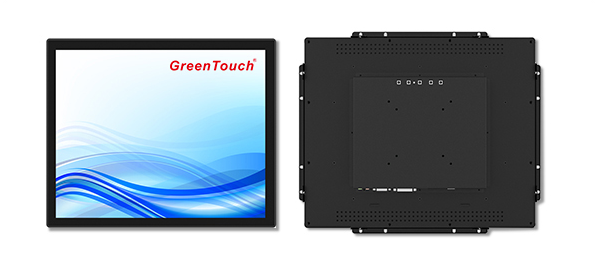In fact, when you choose equipment, you still listen to the ears with your ears. So, what exactly is a good voice? What is the natural balanced sound that makes the listener feel happy in the true sense? With this question, Xiaobian will come to talk with you about the topic of "good voice".
What is the volume of sound? Most people may think that as long as the volume of the high, medium and low frequency bands is adjusted to be the same, then the sound coming out is balanced. In fact, this is a misunderstanding. From the music software we listen to extensively, there will be a large number of orchestras or jazz and pop bands. From these music, we can easily understand that the distribution of high-, medium-, and low-frequency senses should be similar to the pyramid structure, which means that the low-frequency sense of volume accounts for the most, which can form a low-frequency basis. The second-order sense of volume is in the middle, while the sense of the high-frequency band is slightly less, so that the overall sense of hearing will be comfortable. So why is the amount of the high frequency band slightly less? This is mainly because the human ear is most sensitive to the frequency domain of 2000 Hz to 4000 Hz. If the sense of quantity is too much, it will easily cause noise and harsh reactions. If there are some users who use the speakers to listen to music, then you must use some means of absorbing high frequency in the actual listening space.
In terms of control power, the output power of the power amplifier and the damping coefficient of the power amplifier will affect the control power of each frequency, and the performance is not only for the low frequency band. In fact, whether it is high frequency band, medium frequency band or low frequency band, it needs good control power, so that the shape of the instrument and the human voice cannot be condensed or spilled. As long as the control of the high frequency band is good, then when we listen to the violin to the high position, the sense of hearing will be more restrained. When the mid-range control is good, the instrument and the vocals will become full and the shape will be embossed. If the control of the low frequency band is good, then it can not only produce loose elasticity, but the most important thing is that it will greatly improve the resolution of the low frequency.
1. The octave frequency range from 20 Hz to 40 Hz is called extremely low frequency. There are very few instruments in this band, and only the instruments such as double bass, bass bassoon, toba, organ, piano, etc. can reach such a low range. Since this is not the most beautiful range of these instruments, the composers rarely write notes as low. Of course, some popular music and some electronic synthesizers are deliberately deliberate, otherwise the extremely low frequency is not very useful for audio enthusiasts.
Some people may think that although the pitch of the instrument is not so low, the overtone can be as low as the pitch. In fact, this theory is not correct, because the pitch of the instrument is the lowest sound of the instrument, and the sound will only climb up by 2 times, 3 times, 4 times, 5 times, etc., without going down. sound. We can do a very vivid experiment, tightening a string. The full-length vibration frequency of the string is the pitch, and the vibration frequency of the chord length of one-half, one-third, four-mole, one-fifth, etc. is Overtones. The addition of pitch and overtone is the tone of the instrument. This is why the violin and the flute play the same pitch (pitch, for example, the central A is 440 Hz), and we can clearly distinguish between the two who are the violin and who is the flute.
2. The frequency range from low frequency from 40 Hz to 80 Hz is called low frequency. Drums, double bass, cello, bass bassoon, bassoon, bass retraction, bass clarinet, Tuba, French and bass are all musical instruments and vocals of this frequency range. This band is a major contributor to the foundation of a thick bass.
In general, many people mistake this band for extreme low frequencies because it sounds really low. If the sense of volume in this band is too small, the feeling of richness and stagnation will definitely not be there, and it will also lead to the highlight of medium and high frequency and high frequency, which makes the sound unbalanced and is very resistant to hearing.
3. The frequency domain between the medium and low frequencies from 80 Hz to 160 Hz is called the middle and low frequency. This band is a very frustrating event for many speaker users, because it is the culprit that causes the ears to bang. This band can easily produce peaks. In fact, this is related to the listening environment, such as the length, width and height of the room. Therefore, most people try to absorb and improve this frequency band in order to remove this annoying peak, so that the ears no longer have a sensation.
However, everything will not be smooth, when your ears are not heard, then the low frequency of the lower edge and the upper frequency of the upper edge will probably appear concave with the absorption of the low frequency, making the sound sound. Thin, lack of richness. More unfortunately, many people think that this situation is correct because of the disappearance of the peak. This is one of the reasons why many people feel that the sound is not full and moist when listening to music in the house. This frequency domain contains all the instruments mentioned in the above low frequency bands.
4. The frequency domain between the intermediate frequency 160 Hz and 1280 Hz spanning three octaves (320 Hz, 640 Hz, 1280 Hz) is called the intermediate frequency. This frequency band contains almost all of the most frequent frequency fields of instruments and vocals, so it is the most important frequency band. The biggest misunderstanding of the instrument range is also here. For example, most of the sound fields of the violin are in this frequency band, but in general everyone mistakenly thinks it is very high. Also, don't think that the soprano's range is very high. In fact, the highest range of the soprano is only the upper limit of the intermediate frequency.
At the same time, the importance of this band can also be explained from the crossover point of the two-unit speaker. Generally, the crossover points of the two-unit speaker are mostly around 2500 Hz to 3000 Hz. That is to say, the tweeter is responsible for 2500 Hz or more, and the middle woofer unit is responsible for 2500 Hz or less. This 2500Hz is about twice the 1280Hz, which means that in order to prevent the mid-woofer from generating too much crossover point distortion at the IF limit, the designer will increase the crossover point to twice the upper limit of the intermediate frequency. Come, the perfect mid-range can be sent by the mid-low frequency unit.
So, what is the use of high frequency units? If you used to put your ear close to the tweeter in real life, you will hear a "beep" sound, which is actually where most of the overtones are. If there is no "tweet" sound from the tweeter and a medium low frequency unit is used to replay the music, it will be dull. Of course, if it is a three-unit design speaker, this intermediate frequency part will be included in the midrange unit in most cases.
5. The medium and high frequency is called mid-high frequency from 1280 Hz to 2560 Hz. What kind of instruments are there in this band? The violin has about a quarter of the upper range, the upper end of the viola, the flute, the clarinet, the high range of the oboe, the lower half of the piccolo, the cymbal, the triangle and so on. In fact, the high frequency is easy to identify, the high range of the string group and the high range of the wood tube are medium and high frequency, many people in this band will mistakenly think it is high frequency, so please pay special attention to this point.
6. The frequency domain between high frequencies from 2560 Hz to 5120 Hz is called high frequency. This frequency domain has very few opportunities for instrumental performance. Because most of the instruments except the upper limit of the violin, the piano, and the Piccolo high range, most of the instruments will not appear in this band when they are playing.
Still speaking about the crossover point of the speaker, we can find that all of this frequency domain appears in the tweeter. As mentioned earlier, when you put your ear close to the tweeter, most of what you hear is not the high and low notes of the instrument, but a "beep" sound. From this representation of the tweeter, it can be proved again that the tweeter rarely emits the instrument or the pitch of the vocal, it is only a high-multiple overtone of the pitch.
7, very high frequency from 5120Hz to 20000Hz such a wide frequency band, is called extremely high frequency. Speaking of this, everyone can learn from the fact that there are very few instruments at high frequencies, and it is known that the extremely high frequencies contain only the overtones of instruments and human voices. In general, the overtones of musical instruments are mostly higher at lower energy. In other words, the tweeters are designed to be sharp and can reproduce very subtle sounds clearly.
Here, there will be a thing that is very troublesome for the speaker manufacturers, that is, how can we "get the best of both worlds"? What is "two"? Imagine, suppose a tweeter wants to reproduce all the subtle overtones clearly, and design a small current to push the diaphragm. The same high-frequency high-frequency signal that the tweeter is responsible for. It is very likely that the mid-high frequency signal will always be in a dilemma because the energy of these two frequency bands is much larger than the very high frequency. This is one of the reasons why there are a lot of speakers on the market (including some earphones and earplugs) that are clear above the high frequency band, but they are easy to flow.
Written here, Xiaobian wants to say that there are many foreign or domestic speaker brands on the market that have introduced speakers with super tweeters. And the sound of these speakers is very soft, so why do they have to add super tweeters when they have tweeters? Isn't this sound too sharp? In fact, the initial focus of the designers is to make the tweeters undistorted and to reproduce extremely high frequencies, so those UHF units will be responsible for frequencies above 13,000 Hz, so that the speakers can be replayed in actual use. A beautiful movement that is compatible with sound and music.
Industrial For Capacitive Touch Monitor
GreenTouch's industrial for capacitive Touch Monitor has good sealing performance, and has passed EMC anti-interference testing. It has excellent performance such as anti-interference, explosion-proof and anti-vibration, and can meet the requirements of IP65 and IK08 and has good optical stability and touch durability.
GreenTouch's open frame touch monitor delivers an perfect solution that is cost-effective for worldwide customers requiring a reliable product .Designed with reliability from the start, deliver outstanding image clarity and light transmission with stable, drift-free operation for accurate touch responses.Precise small frame design will be completely sealed Touch Screen, so that it has dust-proof, dirt-proof and water-proof function, and make it easier for customers to install in the cabinet. Designed and built by GreenTouch, the model has a long life cycle period and can supply long-term demands. Even if the future replacement of a new generation of LCD panels, you don't need to do external changes.This model has a global standard of agency certification with GreenTouch warranty and overall after-sale service. The industrial for capacitive touch monitor open frame touch monitor is a cost-effective touch solution for system integrators and value-added resellers .




Industrial Touch Monitor,Pcap Touchscreen Monitor,Industrial Touch Display,Industrial Touchscreen Monitors,Big Touchscreen Monitor
ShenZhen GreenTouch Technology Co.,Ltd , https://www.bbstouch.com